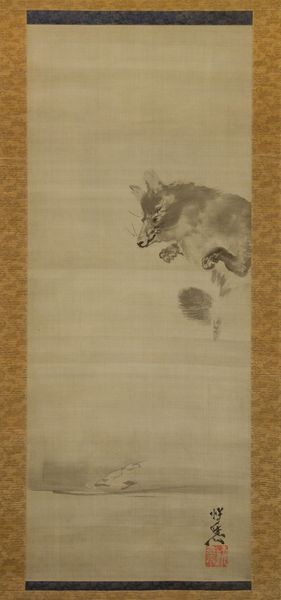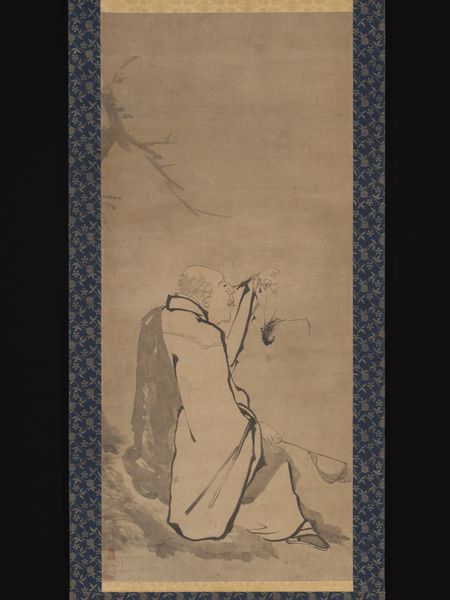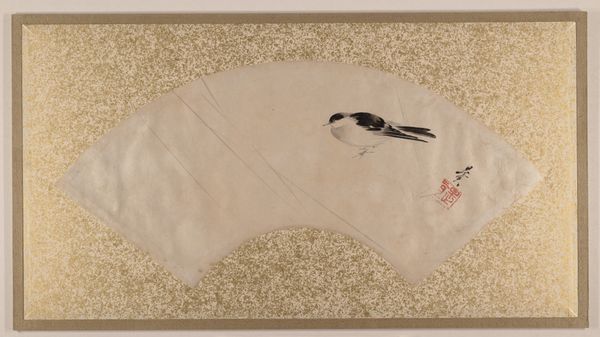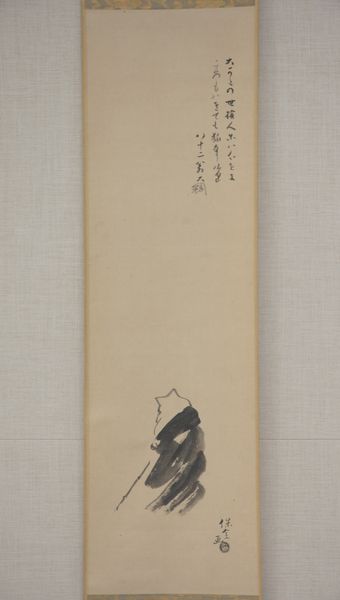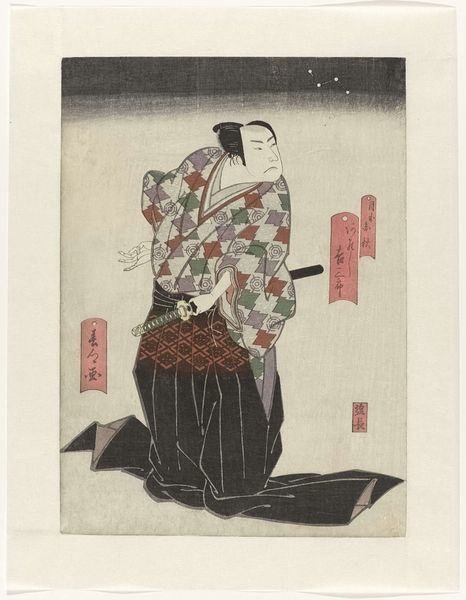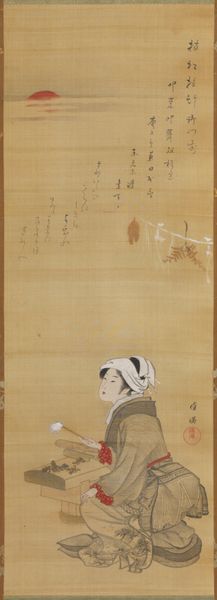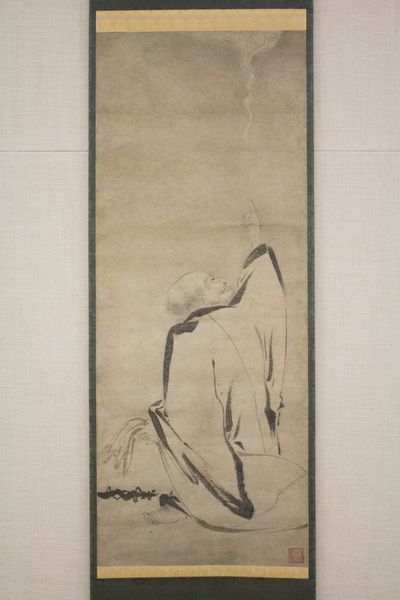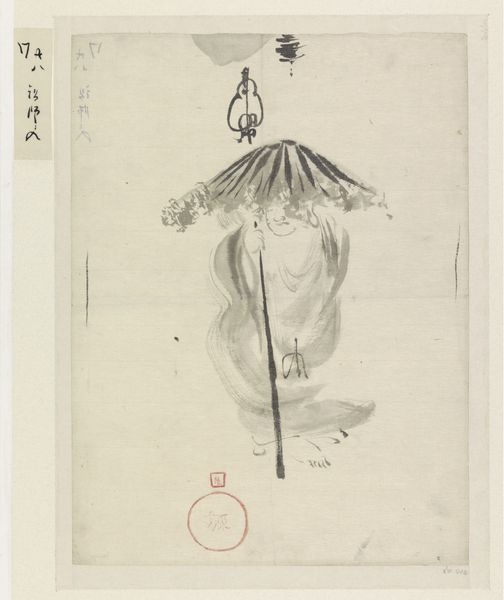
Child Playing with a Blossoming Branch c. mid 17th century
0:00
0:00
hanging-scroll
#
toned paper
#
water colours
#
charcoal drawing
#
japan
#
possibly oil pastel
#
charcoal art
#
oil painting
#
hanging-scroll
#
coffee painting
#
underpainting
#
watercolour illustration
#
watercolor
Dimensions: 36 7/8 × 15 15/16 in. (93.66 × 40.48 cm) (image)67 5/8 × 21 1/2 in. (171.77 × 54.61 cm) (mount, without roller)
Copyright: Public Domain
Editor: So, this hanging scroll, “Child Playing with a Blossoming Branch,” attributed to Tawaraya Sotatsu from the mid-17th century, is really subtle. The child seems almost sketched onto the toned paper with faint watercolors. I am curious about your take on it. How do you interpret this work? Curator: I see it as a fascinating glimpse into the social construction of childhood in 17th-century Japan. Sotatsu, though known for grander works, here presents a delicate image. The child, positioned low on the scroll with so much empty space above, embodies both vulnerability and a sense of potential. The blossoming branch itself is potent. What could it symbolize? Editor: Well, new beginnings maybe? Curator: Precisely. But let's also think about the constraints placed upon children, particularly girls, during that period. The seeming innocence of the scene can be read against the backdrop of societal expectations and limited opportunities. Could the blossoms represent dreams or aspirations? Is the child enacting agency, or is she circumscribed by her gender? What do you think about the use of negative space? Editor: I suppose that all that empty space could feel confining instead of open and free. Also, you know, we are projecting ideas of gender and aspiration onto this image from a contemporary Western viewpoint, but how can we understand what those concepts meant for Japanese people at the time? Curator: Exactly! It's vital to understand how our own subjectivities shape our interpretations. We can use contemporary theoretical tools to examine the intersections of childhood, gender, and culture represented in this artwork, always keeping an eye on our assumptions. This is an object worthy of dialogue, between then and now, here and there. Editor: Thank you! I will never look at a kid holding a flower the same way again.
Comments
No comments
Be the first to comment and join the conversation on the ultimate creative platform.

